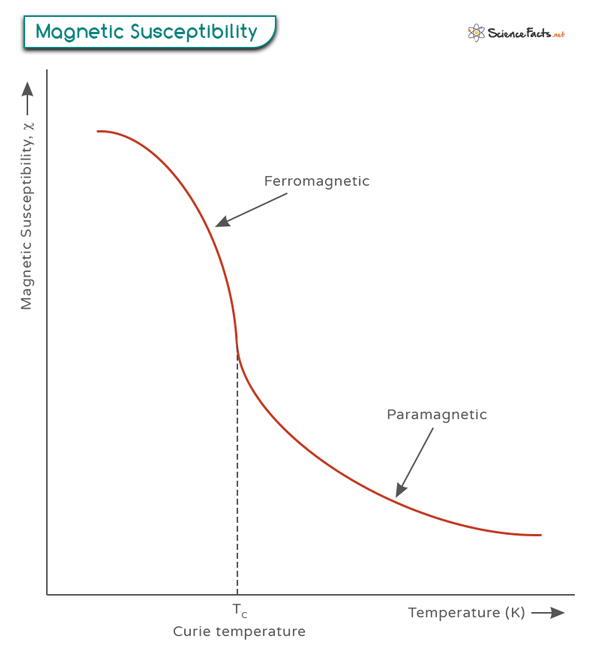The magnetic response of a material can vary depending on its composition, structure, and temperature. Some materials exhibit high magnetic susceptibility, meaning they can be easily magnetized. In contrast, others may have low or even zero susceptibility.
Formula
Temperature Dependence of Magnetic Susceptibility
Applications
Magnetization refers to the amount of magnetic moment per unit volume a material acquires when subjected to an external magnetic field. It depends on the alignment of atomic or molecular magnetic moments within the material. The applied magnetic field strength refers to the intensity of the external magnetic field exerted on the material. It determines the strength and direction of the force experienced by the magnetic moments within the material. Susceptibility can be positive or negative, depending on whether a material becomes magnetized in parallel (paramagnetic) or antiparallel (diamagnetic) alignment to an applied magnetic field. Another way to express magnetic susceptibility is to specify how much the relative permeability differs from one. Units Magnetic susceptibility is a dimensionless quantity in SI units. However, in the centimeter-gram-second (cgs) system, magnetic susceptibility is typically measured in cubic centimeters per mole (cm3/mol). Here, C represents the Curie constant, a characteristic property of the material. The Curie constant depends on the type of material and its specific magnetic properties. Paramagnetic materials exhibit a positive magnetic susceptibility, meaning they are weakly attracted to an external magnetic field. As the temperature increases, the thermal energy disrupts the alignment of atomic or molecular magnets within the material, decreasing magnetic susceptibility. On the other hand, diamagnetic materials have a negative magnetic susceptibility. They are weakly repelled by an external magnetic field. Unlike paramagnetic materials, their magnetic susceptibility does not depend strongly on temperature. Ferromagnetic materials have a much more complex relationship between magnetic susceptibility and temperature. At low temperatures, these materials exhibit spontaneous magnetization. They can retain their magnetization even without an external magnetic field. However, as the temperature increases beyond a certain point called the Curie temperature, ferromagnetic materials lose their spontaneous magnetization and become paramagnetic.
